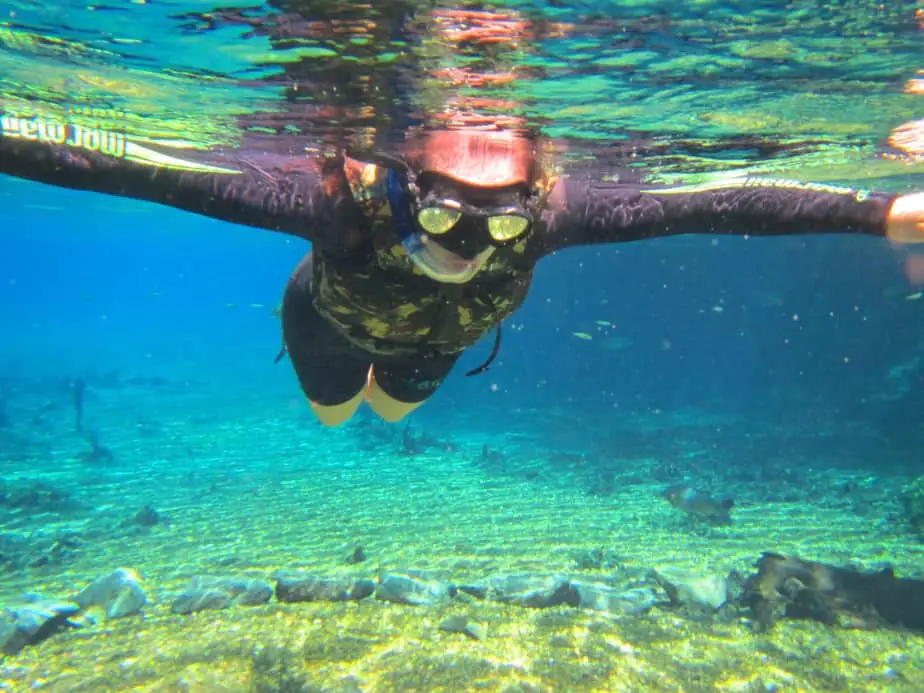Even if you haven’t gone scuba diving before, you likely have heard about the dangers of “the bends”, or decompression sickness (DCS).
Decompression sickness can affect anyone breathing compressed gas underwater who then rapidly ascends to the surface; this can occur even in shallow waters.
As you can imagine, this is an extreme danger to scuba divers, but does the risk of decompression sickness extend to similar activities such as freediving or snorkeling?
In general, snorkelers do not have to worry about suffering from the bends because they are not breathing compressed air. Snorkelers only need to worry about decompression sickness if they are breathing compressed air via a mini scuba tank, and even then the risk is minimal.
To even come close to getting decompression sickness without breathing from a scuba tank, you would have to do so many hours of breath-hold dives (with minimal surface intervals) that the time you spent underwater would allow sufficient nitrogen gas to enter your bloodstream and then get released as bubbles, which is unlikely.
If what we just described doesn’t make any sense to you, then please continue reading the rest of the article where we will describe in detail why snorkelers generally don’t have to worry about getting the bends.
What you should know about decompression sickness
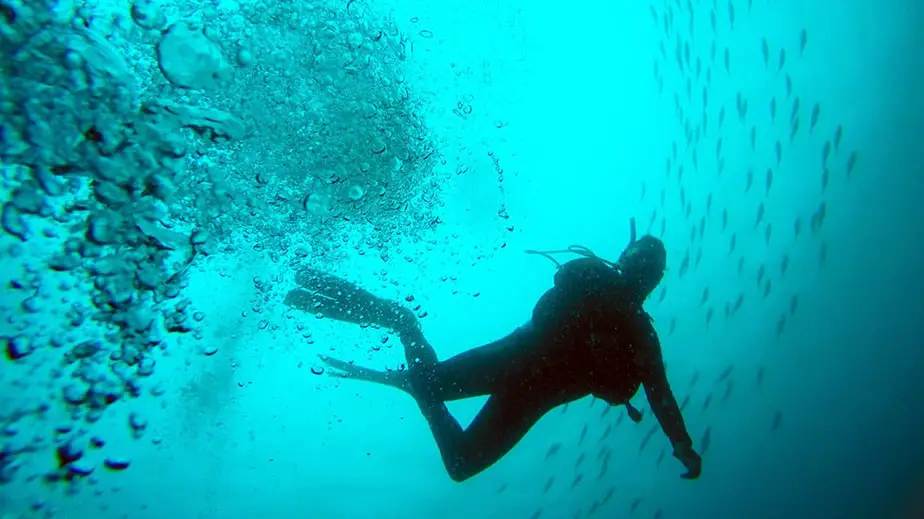
To better understand why snorkelers are generally safe from this dreaded illness, we need to first explain how you might get “bent” in the first place.
Note: what we are about to explain mainly applies to scuba divers. It may seem unrelated to snorkeling, and the fact that it mostly does not apply to snorkelers is exactly the reason why it’s such a non-issue for us.
In layman’s terms, when you scuba dive, you will be subjected to underwater pressure that is greater than the atmospheric pressure at the surface (pressure at sea level). This underwater pressure also applies to the gas that you’re breathing (i.e. the breathing gas in the scuba tank or a mini scuba tank).
At a depth of only 10 m (33 ft) underwater, the underwater pressure is already twice the surface pressure. That means that the volume of breathing gas has also been compressed to half the amount.
At 20 m (66 ft), the pressure would now be three times the atmospheric pressure (the breathing gas has been compressed to ⅓ the amount), and so on and so forth for every 10 m deeper. For those unaware why this is the case, please read up on Boyle’s Law.
In essence, at a depth of only 10 m for example, each breath you take of the compressed air is like you’re breathing in twice the amount because each breath of air has been squeezed to half of its normal volume. It gets even worse the deeper you go.
This is a problem for two reasons: 1) the breathing gas is being used up at a rapid rate, and 2) the amount of nitrogen entering the body is much faster than at the surface (remember that air is 78% nitrogen, 21% oxygen, 1% other gasses).
With all of this excess nitrogen absorbed into your body and being held there due to the water pressure, as soon as you begin to ascend, the nitrogen will get released. This process is normal and is known as “off-gassing.”
The issue is when you ascend too quickly. When you do, the nitrogen is also released too quickly, causing nitrogen bubbles to form. It is these nitrogen bubbles that can wreak havoc on your body, and this is essentially decompression sickness, or “the bends.”
If this is hard to imagine, then the example that is commonly used is to picture a carbonated drink, such as Coke or Pepsi. When sealed, it’s in a pressurized environment. As soon as you break the seal, you will hear a “hiss” followed by bubbles or foam forming. Well, that’s kind of what’s going on inside your body in the case of decompression sickness.
If those bubbles go where they shouldn’t go, they can cause a variety of side effects, including stiff joints stuck in a bent position (hence the name) and the worst case scenario is death.
How does decompression sickness affect snorkelers?
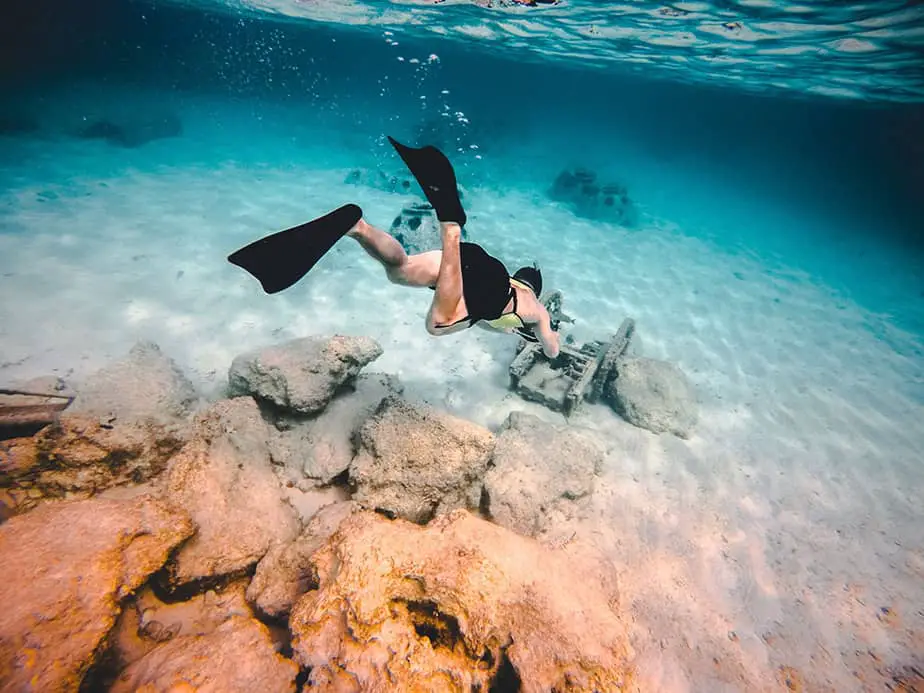
As you can tell, DCS is a very serious issue affecting scuba divers, and as a snorkeler, you’re probably wondering: how does any of this affect me? Why should I care?
After all, we waxed on and on about how the cause of the bends is from breathing compressed gas from a scuba tank and from diving to extreme depths that most snorkelers couldn’t duck dive to.
The answer is that it mostly doesn’t apply to snorkelers (woohoo!). Most snorkelers spend their time floating along the surface breathing air at a normal pressure.
Even snorkelers who are using a mini scuba tank to help them with their duck dives don’t have much to worry about, since mini scuba tanks don’t store that much air in them. Plus, snorkelers won’t dive very deep with them either (a few meters at most) so it’s unlikely that this will cause enough nitrogen to be absorbed into their system.
Lastly, snorkelers who duck dive or freedivers, basically anyone doing breath-hold dives are an interesting case. We did say that the bends affect those who rapidly ascend, so why is this not an issue for breath-hold divers?
There are two main reasons: 1) you are not breathing in compressed gas, and 2) you probably are not diving deep enough (or long enough).
As for the first point, duck diving snorkelers and freedivings are literally holding the same breath of air that they inhaled from the surface for the entire duration of the dive. They are not breathing in additional compressed gas from a tank, therefore the nitrogen absorbed into their system is minimal. That makes a world of a difference between breath-hold divers and scuba divers.
The second point – that snorkelers don’t dive down deep enough – deserves its own section.
How deep do snorkelers dive to?
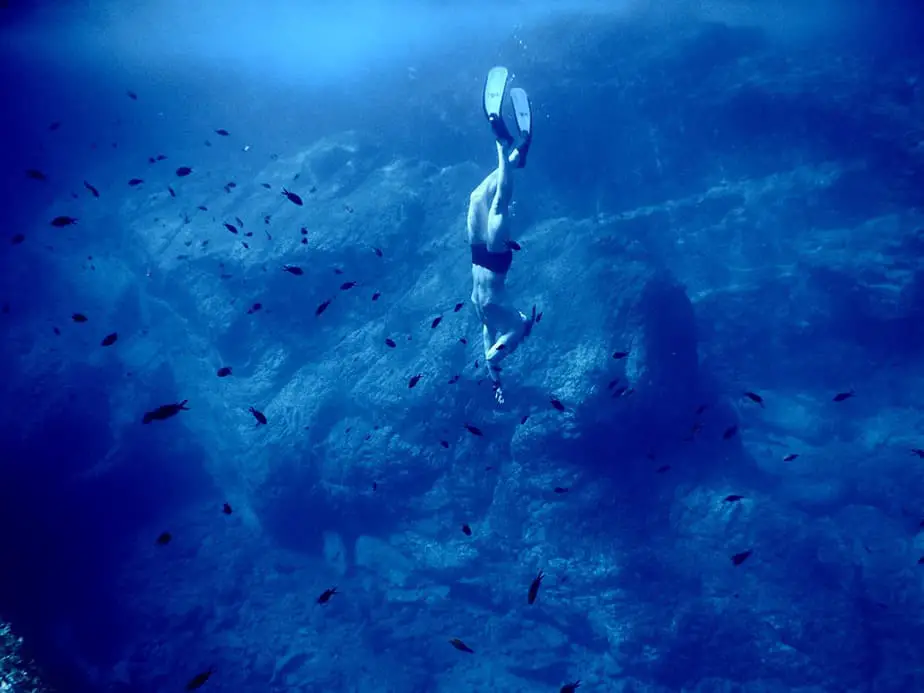
Many snorkelers spend most of their time floating on the surface of the water, content to the view they are getting at that distance.
Some more experienced snorkelers want to get a closer look. In order to do that, they will perform a duck dive, which is when they quickly do a breath-hold dive under the water to get a close up of something interesting they saw.
This is not quite the same as freediving, where a freediver is trying to dive as far down as they can, or to hold their breath underwater for as long as they can.
The goals of a snorkeler and freediver are quite different; a snorkeler is trying to enjoy the view, not set some personal record.
Therefore, we can say that snorkelers typically do not dive very deep, perhaps only 3-5 meters deep on average.
At these depths, the water pressure is very low; it’s not much different than the pressure at the surface. Even a scuba diver could breathe compressed air at these depths for over 3 hours and still not get decompression sickness.
Considering most snorkelers don’t even breathe compressed air, then they are basically not at risk of decompression sickness at all. Even if you do bring a mini scuba tank with you, again, the water pressure is so low and the tank will not last long enough to fill your tissues with enough nitrogen to get DCS.
How might a snorkeler get the bends and how to prevent it?
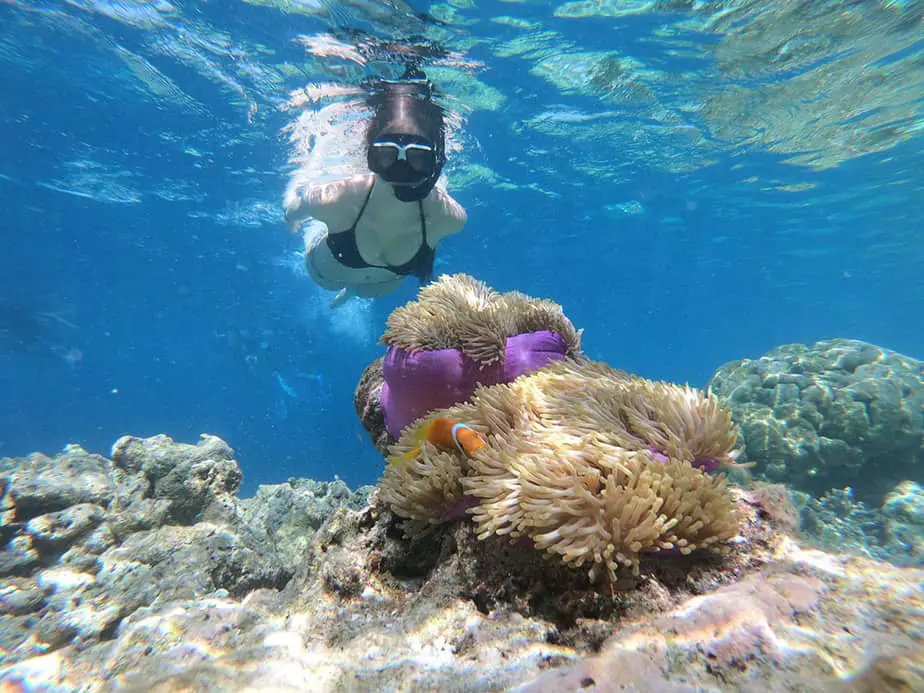
We don’t want to say that it’s impossible for a snorkeler to get the bends. After all, it’s not unheard of for divers to suffer from decompression sickness even though they were only diving in shallow water.
In these cases, the divers were in waters less than 10 m (33 ft) deep, and one diver even got the bends when he was in waters less than 4 m deep (that’s starting to overlap with the depth snorkelers may duck dive to).
That said, these cases all had a few things in common. Either the diver was doing hard work (which increases their air consumption rate, meaning nitrogen is entering their tissues at a faster rate), they repeatedly ascended without doing any safety stops, or they drank alcohol afterwards.
This almost sounds like what a duck diving snorkeler might do – frequently diving down underwater and ascending, possibly doing a lot of hard work if they are kicking hard enough, and maybe relaxing afterwards by having a few beers with some friends.
Once again, a key difference here is that snorkelers are not breathing in compressed air. They are doing breath-hold dives. In other words, the only nitrogen entering their system is from the single breath of air they inhaled from the surface. This is a far cry from what scuba divers are allowing to enter their tissues.
This is also the explanation as to why freedivers can dive down so deep and rapidly ascend without worrying about DCS – they are not breathing in additional nitrogen from a scuba tank.
Lastly, what about alcohol – are snorkelers free and clear to crack open a few cold ones without worry? Here’s something to keep in mind: alcohol reduces your blood flow, which increases how long it takes your body to off-gas any excess nitrogen.
It’s not as much of an issue for snorkelers since they don’t have much excess nitrogen in their system in the first place. But, if you’ve been duck diving and you want to be completely safe, then wait an hour or more after your session before you consume any alcohol.
Summary
The primary factors that can result in decompression sickness (“the bends”) are breathing compressed air, depth (plus how long you stay at that depth), and how quickly you ascend.
Thankfully, snorkelers and even freedivers don’t really have to worry about the bends since they aren’t breathing in compressed air. Both will breathe air from the surface before diving down, and that single breath does not contain enough nitrogen to cause the bends.
Even in the case of someone relying on a mini scuba tank to extend their bottom time, they are not diving deep enough or long enough for decompression sickness to be a serious concern.
Hypothetically speaking, a snorkeler and freediver could get the bends if they were constantly doing breath-hold dives for hours upon hours and spending minimal time at the surface to off-gas (short surface intervals).
It might be possible that, at some point during this ridiculous exercise, enough nitrogen might enter one’s tissues and form bubbles in their bloodstream to cause decompression sickness.
A more realistic scenario is that perhaps the snorkeler was scuba diving earlier in the day and then decided to go snorkeling and duck diving despite having an increased nitrogen load that hasn’t been off-gassed.
Other than that, a snorkeler shouldn’t have much to worry about when it comes to the bends. They can even catch a plane immediately afterwards without worrying about it, whereas a scuba diver would. If you are a snorkeler worrying about getting DCS, stop, relax and have fun instead.

